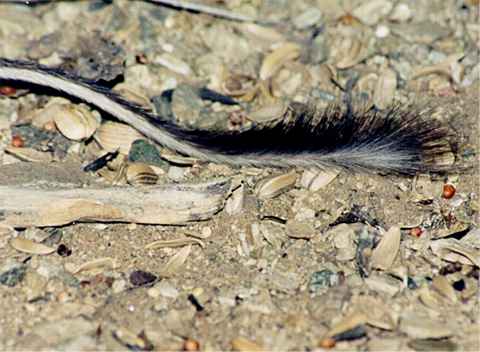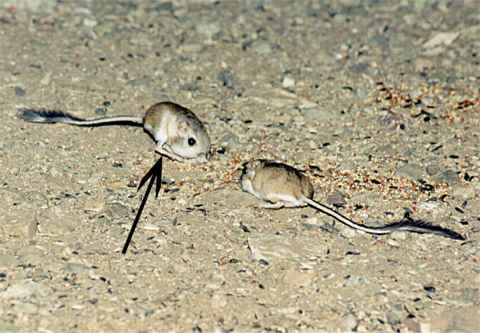
This web site contains photos of the following.Birds,arizona birds,wild birds of arizona,Hummingbirds, Arizona desert life,flowers plants,trees,cactus,blooms,cicada,locust,frogs,tortoise,snakes,moths, butterflies,wolf,lizard,peccary,javelina,coyote,dinosaur insects,fox,grasshopper,hawks,larks,sparrow,warblers,jays,tanager,wrens,robins,grosbeak,hummingbirds,woodpeckers,verdins,phainopepla,blackbird, bunting,ducks,finch,doves,flycatchers,gnatcatchers,kinglet,oriole,owl,pyrrhuloxia,quail,rail,sniperoadrunner,thrasher,thrush,titmouse,towhee,trogon,vireo,vultures and much more,museum,water,aeizona desert,deserts,mountains,
birdfotos.com

Desert Kangaroo Rat
Book says 12 to 14 inches, they must be including the tail because
these cute little critters can't be any more than an inch or two in body length.

Map not to any scale, area not absolute.
**************************************
It's a yellow buff color on top and sides and a whitish color on the bottom side.
Has a bushy or crested tail. It also has white at the tip or end of its tail.
I don't know why it called a Kangaroo Rat.
Maybe it's the tail or the way they jump around when they encounter another rat.
While watching these small critters act up while feeding at night, they do seem to jump quite high,
I would guesstamate about 18 inches. Also I saw them throw some sand with its back feet at,
I think, the others, that came around while it was eating.
*******************************************

Light buff on top, white on bottom. Long tail with a bushy end.
Lrt's take a closer look at that tail.
*******************************************
 |

The white arow is pointing out the white tail tip. The red arrow is pointing out the crested part of the tail or bushy part of the tail. |
***********************************

If you will look very closely, you might be able to see some red spots on the tail.
It's very possible that is what they are referring to when they say "some times with a dark red stripe on the top of the tail".
**************************************
While putting some grain down for them to eat, they actually got on my hand and began to eat, the grain that is.
I did not pursue this action because, number one they just might bite, & number two I want to keep the wild life wild.
***********************************

They don't normally get this close to each other while eating.
I just wanted to show that one is much darker than the other, but it is the same species.
************************************

In this image I do believe I have discovered some thing.
Scroll down to the next image.
***********************************

The black arrow is pointing to the back leg of the Kangaroo Rat.
Does not remind you of a Kangaroo's hind leg?
This truly was one of those accidental photos, the rat had jumped into
this area to feed and my camera caught it about a 14 of an inch above the ground just as it was landing.
*********************************************

It didn't take them long to find my automatic watering system.
I have since inserted some screen wire to keep the small critters from falling in and drowning.
The screen wire will only allow any critter that may fall in to be able to climb out.
****************************************
And of course all of the critters that come to my
No Where Desert Site
know about my round watering cans.

Note that I now have wrapped all of the water founts with an insulating material.
This not only keeps the water cooler than the out side temperature, but it also
has cured the expansion problem I was having causing the water to expand and leak out of the founts.
****************************************
By the way all of these photos were taken between 9 PM and 4 AM.
How was I able to focus in the darkness? My Nikon SB24 flash units have Infared sensing.
If you came from the Misc. index click here to go back.
*****************************************************